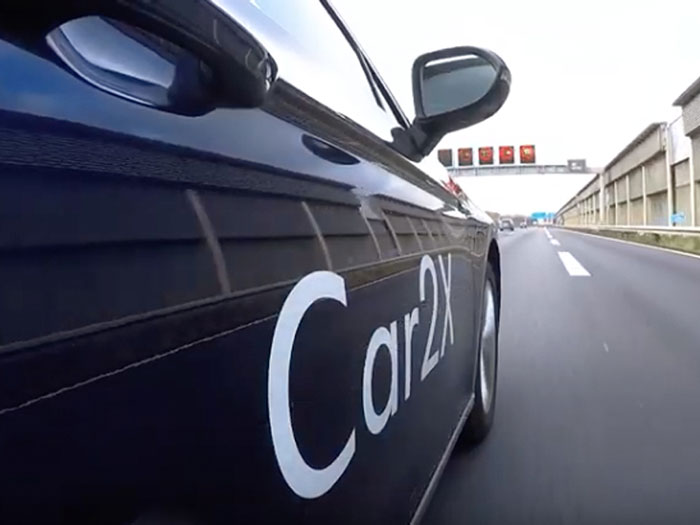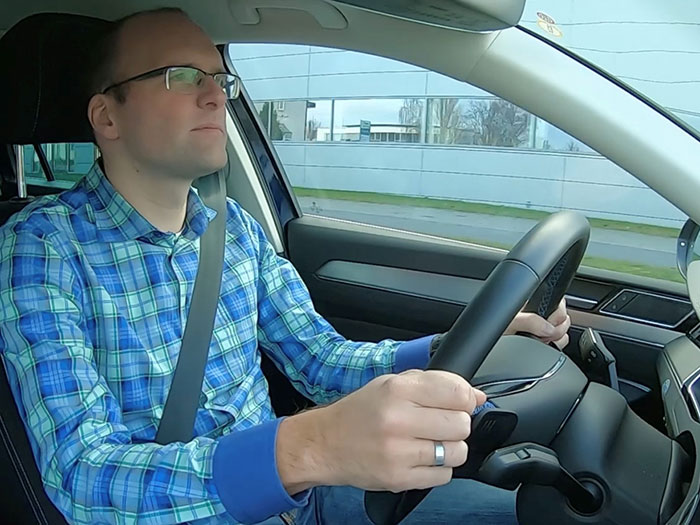Developing Car2X and autonomous driving on an intelligent motorway
A 7 km section of motorway between Wolfsburg and Brunswick entirely monitored by high-resolution cameras - this is the “Lower Saxony testing ground” where data are being collected for the development of autonomous driving and Car2X communication systems.
The cameras constantly record traffic flows to analyse and collect data for the development of autonomous driving and assisted driving. Numerous masts and their equipment cover every angle of the 7 km test route on the A39 motorway, between the Wolfsburg-Königslutter junction and Cremlingen. However, it is not potential traffic offenders who are being “snapped” here.
“The new, ultra-modern test route will provide anonymised data on driving behaviour – data that does not yet exist in this volume,” explains Sven Klomp. He is the project manager for the preliminary development of assistance systems at Volkswagen.
A high-tech 7 km

This particular project takes place within a larger testing ground in the Brunswick area. There are 71 masts located on this 7 km section of the A39. These masts accommodate high-resolution cameras, which evaluate the traffic and driving behaviour with great accuracy.
This Lower Saxony testing ground (the “Testfeld Niedersachsen”) is financed by the state of Lower Saxony and by the German Aerospace Centre, which is also responsible for its operation. “The main priority for us is gathering insights and data on how the traffic actually behaves, in order to draw conclusions for the software for autonomous and assisted driving,” explains Klomp.
Car2X communication
Dynamic data is particularly important. The most recent findings are already being fed into improving Car2X communication in the new Golf. Car2X allows vehicles to communicate with one another and, in future, with the road infrastructure, such as traffic lights.
The pWLAN-based direct communication coordinates with its environment in a matter of milliseconds, and can therefore inform drivers of hazard locations and unforeseen situations before they have even noticed them.
pWLAN communication

In this case, pWLAN facilitates the local communication between vehicles. Depending on the surroundings, the signal can be transmitted over a range of 150 metres in towns and up to 800 metres in the countryside or on motorways. “This means that connected vehicles can warn, for example, about unsafe rail crossings, tails of traffic jams or construction sites,” says Klomp. “Moreover, drivers can be informed about benefitting from the traffic light phasing if they adjust their speed.” However, the road infrastructure is not yet ready for this at present. It needs to be expanded so that it can send the corresponding signals to vehicles.
However, thanks to the interaction of the cameras and Car2X communication, this is already possible on the 7 km section of the A39 motorway. Therefore, the full benefits of this technology can be explored. Each time a vehicle is recorded by the cameras, a pWLAN message is generated and sent out. Currently, however, the signals are only sent for special test cycles, and it is only in the next stage that vehicles equipped with the Car2X technology will be able to benefit from this as they pass through this section.
Digital maps
For the testing on the A39 between Cremlingen and the Wolfsburg-Königslutter junction, a highly accurate digital map was created. All vehicles are localised on this map and provide data, even if they are not yet equipped with technologies such as Car2X. For this, they are recorded accurately and provide basic information about traffic events on the motorway.
“This data is therefore doubly valuable – in the short term, for assisted driving such as Car2X and, in the longer term, for the software for automated driving,” explains Klomp. The map is constantly updated, as is the data gathered in real time. That’s because the more detailed the records, the more accurately the conclusions drawn from them can be implemented in the software.
Source: Volkswagen AG
